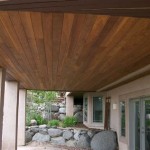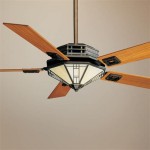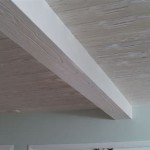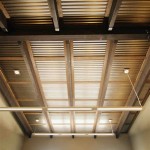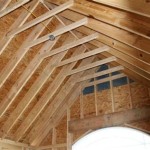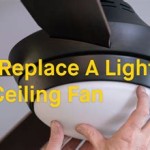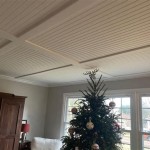Can You Put a Ceiling Fan on a Slanted Ceiling?
The question of whether a ceiling fan can be installed on a slanted or sloped ceiling is a common one for homeowners and builders. Fortunately, the answer is generally yes, but it requires careful planning, specific hardware, and adherence to safety guidelines. Understanding the factors involved ensures a successful and functional installation.
Understanding the Challenges of Sloped Ceiling Installations
Slanted ceilings present unique challenges compared to standard flat ceilings. The primary concern revolves around ensuring the fan hangs vertically and operates safely. Gravity's pull on a fan mounted on an angle can lead to instability, wobbling, and potential damage or even detachment. The design and installation process must counteract these forces to provide a stable and balanced fixture.
One of the main challenges is the mounting process. Standard ceiling fan mounting hardware is designed for flat surfaces and may not be suitable for sloped ceilings. This necessitates using specialized mounting kits and techniques to accommodate the angle of the ceiling. The angle of the slope itself is also a crucial factor, as steeper slopes require more specialized solutions.
Another consideration is the fan's clearance. The blades of the fan must have adequate space from the ceiling and any surrounding walls to operate effectively and safely. On a slanted ceiling, this clearance can be reduced compared to a flat ceiling installation, necessitating careful measurements and selection of the appropriate fan size.
Necessary Hardware and Installation Techniques
Successfully installing a ceiling fan on a sloped ceiling involves utilizing specific hardware designed to accommodate the angle. The most important component is the angled mounting kit, also known as a sloped ceiling adapter. These kits typically include a swivel mechanism and a canopy designed to sit flush against the angled ceiling, while allowing the fan to hang vertically.
The angled mounting kit works by compensating for the angle of the ceiling. The swivel mechanism at the top of the downrod allows the fan to hang straight down, regardless of the ceiling's slope. The canopy, which covers the mounting bracket, is designed to match the angle of the ceiling, providing a secure and aesthetically pleasing finish. Choosing the correct angled mounting kit is crucial, as kits are often rated for specific ceiling slopes, measured in degrees.
In addition to the angled mounting kit, the downrod's length is a critical factor. A longer downrod may be necessary to achieve proper blade clearance from the ceiling, particularly on steeper slopes. The ideal downrod length ensures both safety and optimal airflow. The downrod should be chosen to allow the fan blades to be at least seven feet from the floor.
The installation process itself requires careful attention to detail. After turning off the power to the circuit, the existing electrical box needs to be assessed. Standard electrical boxes may not be strong enough to support the weight and vibrations of a ceiling fan. Replacing the existing box with a fan-rated electrical box is crucial for safety. This box is specifically designed to handle the dynamic loads associated with a rotating fan.
Next, the angled mounting bracket is securely attached to the fan-rated electrical box. The swivel mechanism is then attached to the bracket, followed by the downrod and the fan motor. Wiring the fan to the electrical supply involves connecting the wires according to the manufacturer's instructions, typically using wire connectors to ensure secure and insulated connections. After wiring, the canopy is installed to cover the bracket and wiring, completing the installation process.
Key Considerations for Fan Selection and Safety
Selecting the right ceiling fan for a sloped ceiling installation involves several important considerations. Fan size is a crucial factor, as the blade span determines the area the fan can effectively cool. On a slanted ceiling, choosing a fan that is too large can lead to clearance issues, while a fan that is too small may not provide adequate airflow. The room's dimensions are therefore an important factor in fan selection.
The fan's weight is another important consideration, particularly for angled ceiling installations. Heavier fans can put more stress on the mounting hardware and the electrical box. Choosing a lighter-weight fan can reduce the risk of instability and potential damage. Checking the weight rating of the angled mounting kit and ensuring it is sufficient for the chosen fan is essential.
Safety is paramount when installing a ceiling fan on a slanted ceiling. Ensuring the power is disconnected before beginning any work is crucial to prevent electrical shock. Using the correct wiring connectors and grounding the fan properly is essential for electrical safety. It is often advised to consult a qualified electrician for wiring if one is unsure of the correct procedure.
Regular maintenance is also important for ensuring the continued safe and effective operation of a ceiling fan on a slanted ceiling. Periodically checking the mounting hardware, downrod, and blade connections for looseness is a good practice. Tightening any loose screws or bolts can prevent wobbling and potential detachment. Cleaning the fan blades regularly can also improve its efficiency and performance.
The angle of the ceiling slope will also affect the selection of appropriate hardware. Most angled mounting kits are designed to accommodate slopes up to a certain degree, usually around 45 degrees. If the ceiling slope exceeds this limit, specialized solutions may be required, such as custom-made mounting brackets or professional installation. Consulting with a qualified installer is recommended for steep slopes.
The location of the fan within the room is an important consideration as well. Positioning the fan in the center of the room is usually ideal for optimal airflow distribution. However, on a slanted ceiling, this may not be possible due to the room's geometry. Careful planning and measurement are necessary to determine the best location that provides adequate airflow without compromising safety or aesthetics.
Additionally, consider the style and design of the fan to complement the room's decor. While functionality is paramount, choosing a fan that matches the room's aesthetic can enhance its overall appearance. A wide range of styles and finishes are available, from traditional to modern, allowing homeowners to find a fan that suits their taste.
Finally, reviewing the manufacturer's instructions carefully before beginning the installation process is crucial. The instructions provide detailed guidance on installation procedures, wiring diagrams, and safety precautions. Following the instructions closely ensures a successful and safe installation. If any steps are unclear or confusing, consulting a qualified electrician or installer is recommended.
In summary, installing a ceiling fan on a slanted ceiling is achievable with careful planning, the correct hardware, and adherence to safety guidelines. By understanding the challenges, selecting the appropriate components, and following the installation instructions, homeowners can enjoy the benefits of a ceiling fan in rooms with sloped ceilings.

How To Install A Ceiling Fan On Sloped Lemon Thistle

How To Choose A Ceiling Fan For Vaulted Ceilings Lightology

Install Ceiling Fan On Sloped Simple Modern Handmade Home

How To Install A Ceiling Fan On Sloped Lemon Thistle

Electrical Mount Ceiling Fan At The Peak Of A Sloped Home Improvement Stack Exchange

Ceiling Fans For Angled Ceilings

Ensuring Proper Ceiling Fan Installation With Vaulted Ceilings

Fans On An Angle Installing Ceiling Angled Or Raked

Vaulted Sloped Ceiling Adapter For Modern Fan Company Fans Stardust

How To Find Ceiling Fans Slope Adapters And Downrods For Angled Ceilings Delmarfans Com
Related Posts

